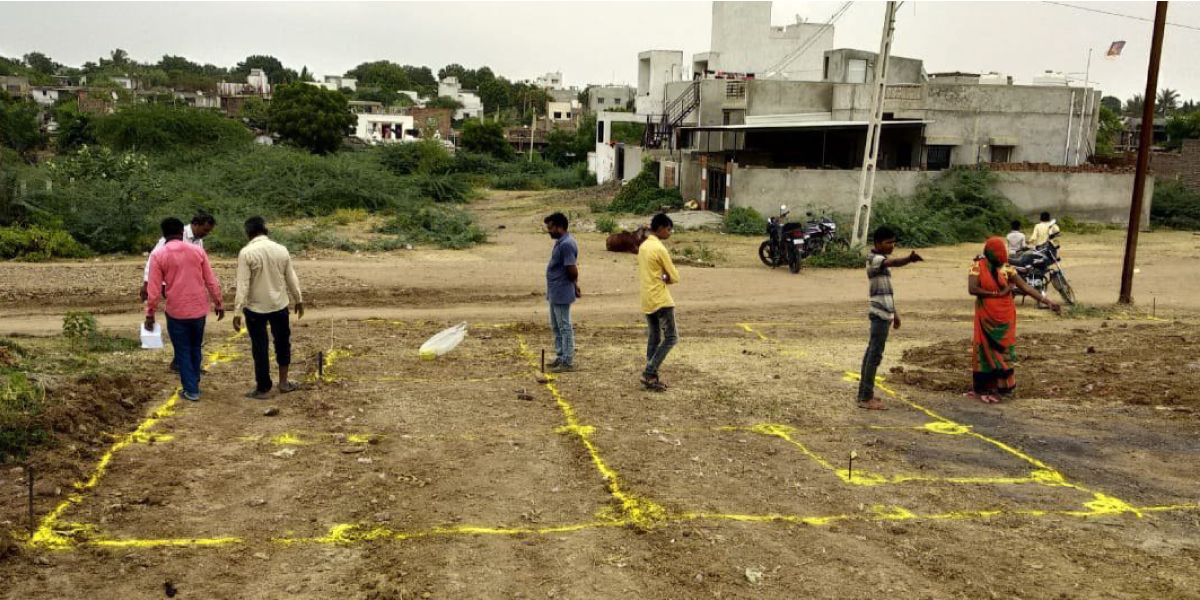We shape our buildings, and they shape us in turn. Our homes, as the quotation implies, play an important role in our lives. A well-designed home adds significant value and a sense of ownership to our lives. As previously learned, there are several processes involved in house designing. Let's start with the more physical component of it. In the back of our minds, we all have a gorgeous ideal house. The need to name something your home is a never-ending journey that begins at the very beginning of our life.
Before embarking on your path to build your home, you need first to understand the fundamentals of construction and create a blueprint to make the entire process less exhausting and unlimited. When you build your own home, you have complete control over the design and layout. This can be a disadvantage if you want to buy a property because you will be compelled to select from pre-designed residences.
Homeownership allows you to invest in future equity that will grow alongside your family. It is necessary to make strong judgments to achieve stability and security while building your home. There are various aspects to look for. Some of the important phases which every home builder has to go through are given below.
Legal paperwork
Before the start of residential construction, you must complete the necessary papers. It entails the development of drawings, the involvement of labour and material expenditures, and the approval of the drawing by the CDA (City Development Authority).
Putting a stamp on the approved plan
Contractors will begin marking the layout after the legal paperwork has been approved. Boundaries are initially marked on the ground, and the inside and outside the ground layout is cleaned. The markings are extremely precise in that they define the dimensions and orientation.
Excavating the sites
It is done to lay the foundation for the construction of a wall. It is carried out as per the designs, which specify the length and width. Excavating the earth for the foundation is done with high-tech machinery.
Construction process stages
Constructing your home gives you a sense of complete comfort while reducing the possibility of recurring maintenance concerns. If you want to build your own house, you must understand that it will not be robust unless built with concrete or good quality mortar. You and the builder work together to create your dream home. Numerous processes must be completed before the foundation is laid out.
-
Selecting the best aggregates
The contractors choose concrete before installing the house's foundation. It is an important aspect since it serves as the support and one of the primary load-bearing structures. It is a composite material made up of aggregates such as sand, gravel, stones, and binders. The aggregates have good compressive strength but poor tensile strength.
Contractors frequently use steel bars, sometimes known as rebars, to compensate for the low tensile strength (Reinforcement Bars).
As a result, the foundation is the base upon which you will build the entire house. It is analogous to the human body's feet and legs. And footing is similar to an anchor in that it supports the foundation and grounds the house by carrying the structure's weight.
The following are some of the primary sub-work involved in foundation:
- Creating a stable foundation
A sturdy foundation is formed by tying together the reinforcements; The footings are then installed, and the concrete cement is spread on the soil to the desired depth. Pre-construction Anti-termite treatment is performed to repel termites from the soil layer in direct contact with the foundation and floor structure. Concrete is a highly flexible building material.
Preparing the proper mixture constrains accuracy. Contractors hire concrete trucks to create a homogeneous and uniform bulk. Compaction is another crucial factor to consider. This is done to evacuate the trapped air in the concrete mixture. The primary goal of this is to obtain a dense, homogeneous mass. Mechanical vibrators are used to eliminate the honeycomb effect.
-
Curing for an appropriate moisture content
When concrete is put at an early stage, it is necessary to control the moisture level and temperature. Contractors perform this method to assist the concrete in producing the desired durability and strength.
Temperature is the most important aspect of curing. It occurs faster at higher temperatures because it impacts the pace of hydration and strength development. Contractors ensure that the temperature is above 10° C for strength.
After the marking is completed, it is done to obtain a properly shaped concrete according to the dimensions specified in the drawing. It also keeps the concrete from making touch with the dirt.
The following are the several forms of foundation work:
- Full Basement: These are the footings installed deep below the frost depth of the region, as well as the eight-foot-high walls that will enclose the pour concrete slab. It eventually results in the formation of an underground storage place.
-
Crawlspaces: These are the most commonly used foundations. They have vent apertures and are installed to prevent excess moisture buildup. Building scientists, on the other hand, feel that these foundations can lead to structural failure.
-
Slab-On-Grade: As the name implies, it is a slab poured with grade-level concrete that serves as the main living area's subfloor. The footings surrounding the corners aid in transmitting the weight of the house walls to the ground. Before the slab is poured, contractors must design the entire mechanical system.
Rough Framing
It is one of the most vital structural elements. It's similar to the skeleton of a real house. It is done to give a plan for the building's solid internal construction. Lumber is used to construct the framework for the walls, roof trusses, and decks.
Construction framers measure and cut lumber to assemble it with anchors for walls and subfloors. Windows, doors, and shingles are also included. The studs are attached around the openings for doors and windows by the frames.
Hiring professional framers is required as it involves complicated geometrical calculations as the house includes arches and a ceiling. It is where you will see the house start to take shape.
It is the technique by which we make the house's structure waterproof. Contractors install decks and shingles. They also install the windows and wrap sheathing around the external walls.
Contractors must collect rough measurements for the type of fixture utilised before installing the plumbing system. These are known as plumbing rough-in plans, and they specify the dimensions of the fixture and the minimum height from the floor and wall. It aids in the location of the supply line and drains pipe holes in the walls and floor.
Contractors ensure that the soil pipe is put one foot below the basement floor's final grade, with a pitch of around 1/4" per foot in the outside direction.
It is recommended that plumbing drains with a diameter of less than 1/8 inch be used "per foot is a significant risk and will clog repeatedly".
Similarly, in hot water or steam heating systems, the boiler is outfitted with specialised equipment to heat water for residential use. Hot and cold water lines are pitched, and the lower point of each system is equipped with a stopper for easy drainage.
Thermal insulation is the next step, and it protects your home from any fire threats. It is an essential construction feature for a comfortable and energy-efficient home. Inadequate insulation can force you to purchase expensive heating and cooling systems, raising your energy expenditures.
Insulation is used to describe the suitable conditioned area inside the house as a building envelope. It serves as an internal and exterior permanent substrate for floors, roofing, and walls. They are linked and filled with concrete to make a form for a building's floors.
The most prevalent insulating materials are cellulose, glass wool, rock wool, and fibreglass. Electricians use the r-value to determine the effectiveness of insulation. It is a mathematical method for calculating heat transfer through conduction.
The thickness of the insulating material splits the temperature difference between inside and outside, further divided by the material's thermal conductivity multiplied by the walls through which conductivity occurs. The temperature difference is determined by the weather outside and what you are comfortable with inside your home. Though it extensively relies on the resistance's conductivity and thickness.
Drywall is installed after the insulation, plumbing, exterior, and interior examinations have been completed. The house will begin to take its final shape. And the house's outside is finished with bricks, stucco, and stone. Roofing should also be completed in due course.
Drywall is made of gypsum and can be used to replace the plaster at home. It is one of the most popular building materials. They are simple to repair. It is installed to keep moisture and mould at bay. It also has fire-resistance qualities. It protects the building's infrastructure and foundation.
Expert advice on how to cut costs:
Maintain the original plans. Changes might raise the cost of construction.
To save money on transportation, prefer to get products from local vendors.
Avoid concealed wiring since it can raise labour costs.
Prefabrication shortens construction time and ensures cost savings.
Hiring experienced personnel will assure compliance quality while reducing the likelihood of changes.
Décor and finishing
Once the construction is complete, it's time to decorate the house and make it more fascinating. The furnishing carpenters are brought in as the texture cures to install the interior doors and moulding. The stair railing and balusters have been designed.
At this stage, you design your living environment to be both comfortable and stylish. Décor entails incorporating aesthetic aspects and installing current utilities at home; Installation of storage cabinets in the kitchen and bathroom. Setting up the kitchen countertops and chimney.
To reduce pollutants and chemicals, paint the house with environmentally safe paints. Choose brushed concrete and tiles influenced by nature, such as seagrass, rattan, or jute.
This will give your property a sophisticated, timeless appearance. It's remarkable to have a house with good infrastructure and modern amenities.
Should you hire contractors?
It is one of the essential decisions that each homeowner must make. A home is a very personal experience, and you may want your views and ideas to be taken into account. Many variables should be considered when making this choice.
-
A constructor provides cost-effective products while maintaining high-quality standards. Obtaining a reasonable bid is important to stay within the budget. They will make the process easier by offering one-stop shopping for excellent building and design models. Hiring a custom home builder will provide you with this advantage if you want to make your property stand out.
-
Similarly, if you decide to take on this project on your own, you will have complete control over the design of your home. You are free to be as creative as you want and are not expected to settle for anything. You can begin from scratch.
-
Your home will be custom-built with knowledge of present and future needs in mind. Because you will be buying for the individual project, building a house on your own can put you in a bind financially.
The cost of building a home is a significant monetary outlay for most people. It adds value to your life and allows you to make your dream home a reality. It gives you a sense of comfort and assurance that you will not have any problems in the long run by deciding on the best course for the construction of your home.
By laying your own foundation for a new home, you open the door for distinct opportunities and more room for benefits that would not be available if you purchased an existing property. Read further to understand plumbing and electrical installation to resolve most of your queries.




















